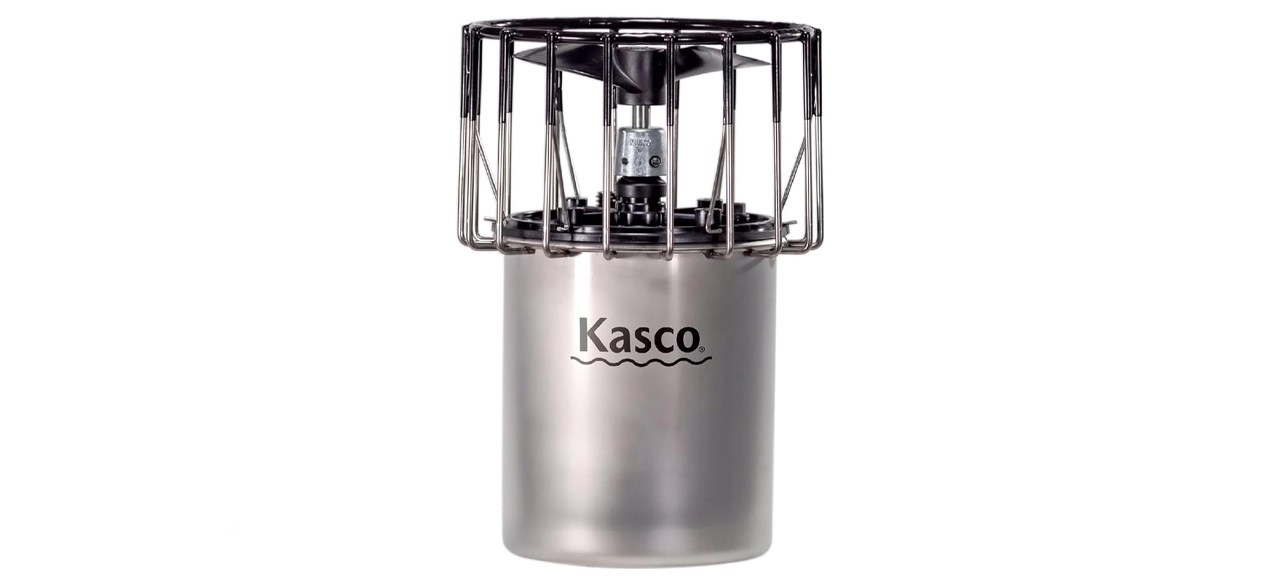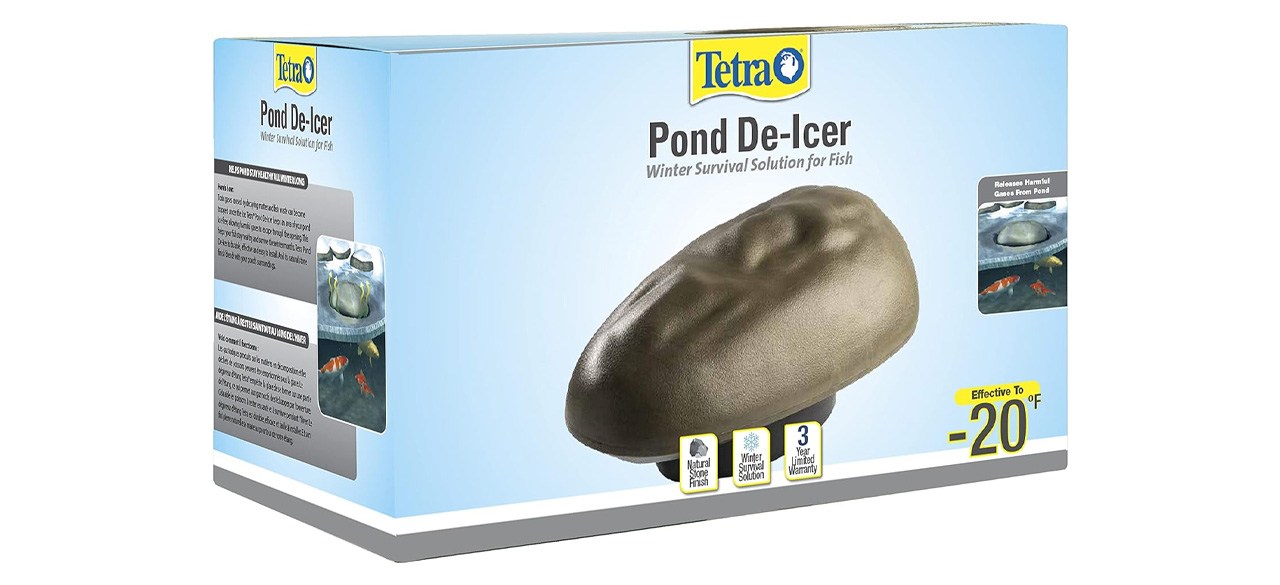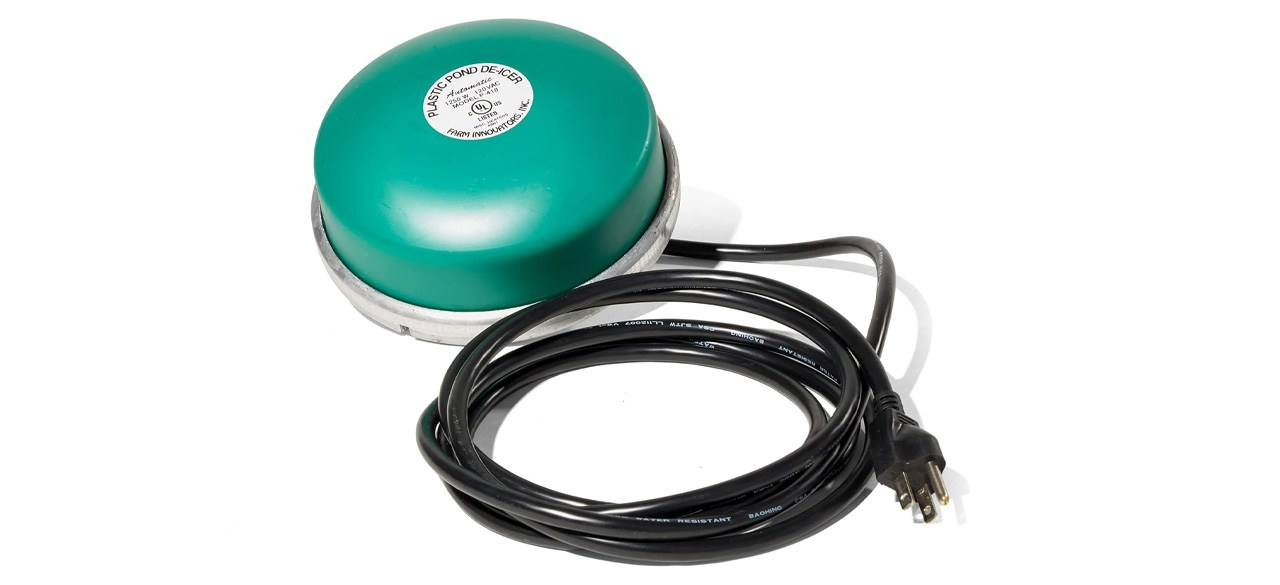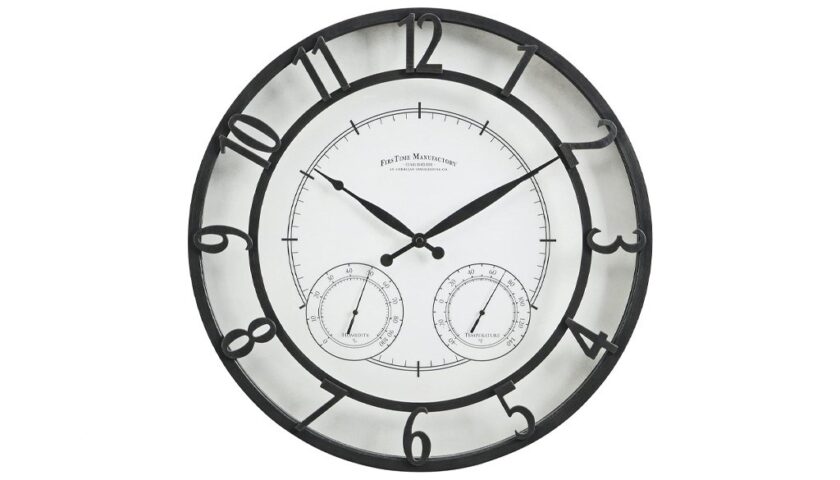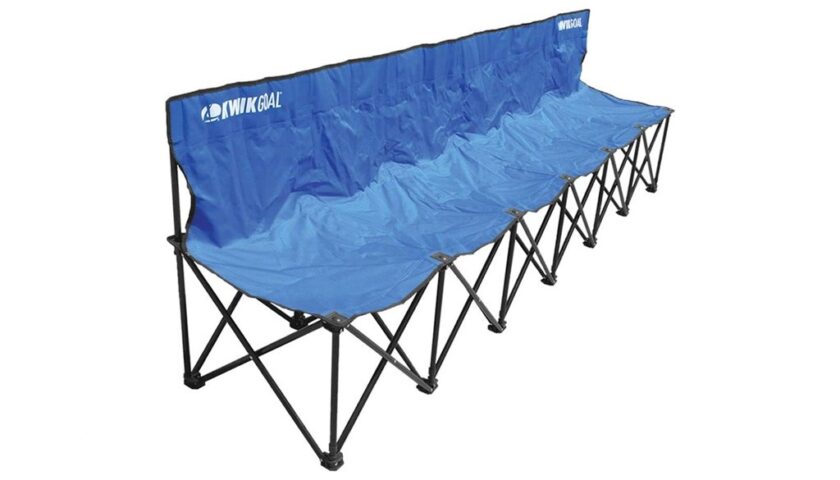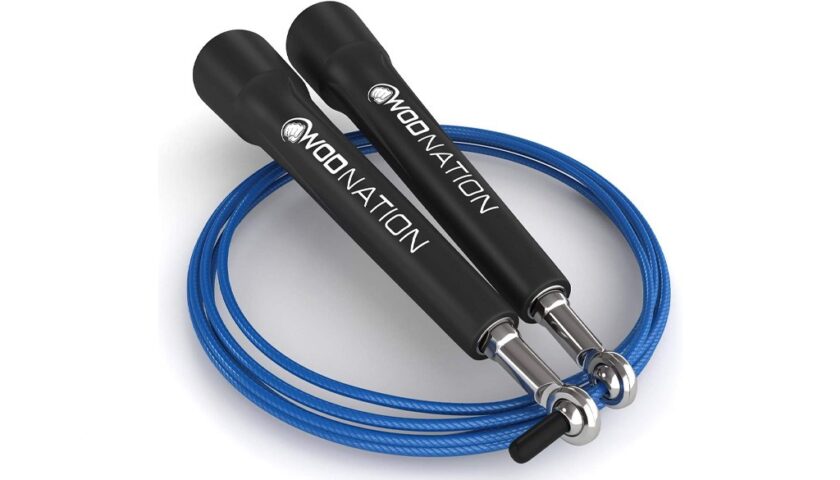Which pond de-icers are best?
One of the best ways to keep your fish safe and healthy during the winter months is by preventing your pond from completely freezing over. A pond de-icer saves you and your fish the heartbreak of “winterkill” caused by a combination of low oxygen levels and dangerous gases trapped beneath the ice as temperatures dip below freezing.
Before purchasing a pond de-icer, you should consider important factors like pond size, durability, cord length, and whether a submerged or floating de-icer is better. Our buying guide explores all these factors and offers our product recommendations at the end, such as the professional-grade stainless steel Kasco’s Marine Lake and Pond De-icer.
What to know before you buy a pond de-icer
Pond size
Pond size as measured in gallons and the severity of your winters determines the size of de-icer you need. As a basic rule of thumb, you need one watt of power for every gallon of water in your pond (e.g., 300 watts for 300 gallons).
Durability
Your pond de-icer should be durable enough to stand up to harsh conditions and the lower limits of temperature in your climate. Some models can weather -20 degrees F while others struggle if temperatures dip below 20 degrees F. Stainless steel stands up best to corrosion and cracking, followed by cast aluminum. While plastic is the least durable, it doesn’t get quite as hot as metal de-icers, which can damage ponds with plastic liners.
Appearance
If you choose a floating de-icer, you may want to consider its appearance since it will be visible. Some de-icers are made to mimic natural stone, while others may stand out in the pond like a sore thumb.
Submerged vs. floating
- Submerged: A submerged de-icer may be more visually appealing since it doesn’t distract from your pond’s aesthetic. Submerged de-icers are typically more energy-efficient and help circulate water more effectively. Installation for a submerged de-icer is usually more complicated since it must be hung or mounted.
- Floating: A floating de-icer floats on the pond’s surface. While it’s less energy-efficient and more expensive to run than a submerged de-icer, it’s often more effective in very low temperatures. Installation is simple: just plug the de-icer into a power source. The float in some models can be removed, allowing you to submerge the de-icer if desired.
What to look for in a quality pond de-icer
Cord length and type
Since most manufacturers advise against using an extension cord, a de-icer’s power cord length is an important feature. Cord length varies from 10 feet to more than 100 feet. Measure carefully from your power source to your pond before making a purchase. Wire-wrapped cords are desirable in harsh winter climates since they hold up best in low temperatures.
LED display
Some models include a helpful LED display that shows you at a glance whether or not the de-icer is powered on. Check your de-icer regularly during the winter since these products are somewhat notorious for their shorter life span.
Thermostat
While a de-icer doesn’t have a traditional thermostat that gauges temperature, many models offer a power-saving feature that turns the de-icer on and off as needed based on water temperature.
How much you can expect to spend on a pond de-icer
Budget de-icers for small tanks or ponds start at $40, but you should keep in mind that low-end models are notorious for lasting just one or two seasons. Mid-range models offer warranties, coverage for larger ponds, longer cords, and cost between $50-$100. Submersible professional-grade options meant for boats and large bodies of water can cost upward of $600.
Pond de-icer FAQ
Q. Do I need a pond de-icer if I have an aerator or waterfall?
A. If you’re already using an aerator to help oxygenate your pond, you may not need a de-icer unless your winters are very harsh, which is good news since aerators are less expensive to purchase and run. Likewise, if you have a waterfall that runs during the winter, you don’t need a de-icer.
Q. How should I position my de-icer in the pond?
A. Position your de-icer in a shallow area of the pond that you can comfortably access for installation. Your de-icer reflects heat off the sides and bottom of the pond, so a shallow area allows it to work more efficiently.
What are the best pond de-icers to buy?
Top pond de-icer
Kasco’s Marine Lake and Pond De-icer
What you need to know: This is a professional-quality, stainless steel de-icer that can easily manage larger ponds.
What you’ll love: It has high-quality materials and construction. The setup and instructions are simple. There are several power cord length options up to 100 feet. It’s able to maintain a 95-foot diameter ice-free circle of water.
What you should consider: It’s more expensive than other options and heavy to lift. It must be mounted rather than hung to prevent wire breakage.
Top pond de-icer for the money
What you need to know: This is an affordable, attractive option that’s energy-efficient and great for ponds up to 300 gallons.
What you’ll love: It has a natural-looking faux stone finish. and a15-foot cord. It’s energy-efficient and keeps the pond de-iced down to minus 20 degrees F.
What you should consider: It may only last one or two seasons.
Worth checking out
What you need to know: It’s got a durable, cast-aluminum construction that’s great for smaller ponds or tanks.
What you’ll love: It’s efficient at de-icing ponds or tanks up to 600 gallons. It includes a wire-wrapped 10-foot cord.
What you should consider: There are some reports of units failing after only a few uses.
Prices listed reflect time and date of publication and are subject to change.
Check out our Daily Deals for the best products at the best prices and sign up here to receive the BestReviews weekly newsletter full of shopping inspo and sales.
BestReviews spends thousands of hours researching, analyzing and testing products to recommend the best picks for most consumers. BestReviews and its newspaper partners may earn a commission if you purchase a product through one of our links.
Distributed by Tribune Content Agency, LLC.


